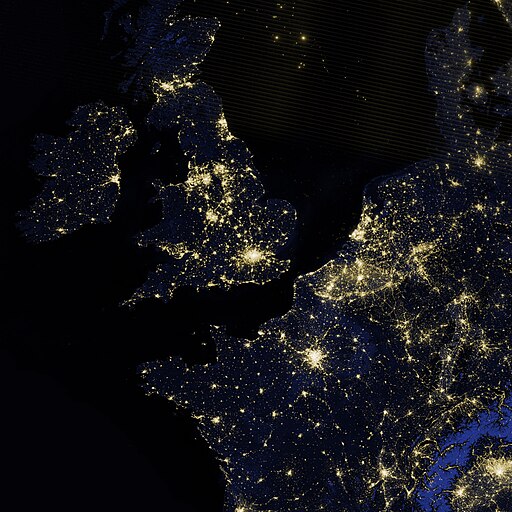Citizen scientists have completed the initial classification of over 130,000 images in the Dark Skies of ISS project. This projects sorts images taken at night on the international space station as to whether the picture contains either stars, cities, the astronauts, etc, and how sharp the image is. To avoid errors, each image was categorized by multiple participants, so that's probably over half a million classifications in less than half a year!
In the Lost at Night project, citizens apply their lay knowledge of local and international geography to identify which cities are in specific photographs. Every photo is again categorized multiple times, and this has resulted in the discovery of almost 2,500 images of cities that researchers like me didn't know existed. Images from cities like San Jose (shown below), and also from places less well known to Americans and Europeans, like Chennai, Inda, or Da Nang, Vietnam.
 |
| San Jose from the International Space Station. High resolution image available from NASA. |
The citiesatnight team has released a preliminary set of these photos within a Google interface so that you can easily check if your city has been photographed. Please bear in mind that this is not a final product. If you find a city that has been misclassified, they would appreciate it if you would report it to them. Believe it or not, that link contains only the cities classified by citizen scientists. The Atlas of images put together by professional scientists and enthusiasts is actually smaller in terms of number of images, and I explained the best way to use it in July.
Finally, the citiesatnight team has also released seven examples of images that were georeferenced by volunteers. In the Night Cities project, participants match locations on the image with locations on Google Maps, allowing the photos to be overlaid on top of a map. A total of 128 cities have already been georeferenced.
 |
| Manhattan at night, georeferenced by citizen scientists at citiesatnight.org |
The citiesatnight project has been an astonishing citizen science success story. The project was put together almost entirely through volunteer time, as far as I know it hasn't received any government financing. The International Dark-Sky Association recognized its leader Alejandro Sanchez de Miguel with an award this fall. If you know of other ways in which the project could be recognized, please nominate it!
Note to journalists and researchers: citiesatnight asks that you cite this paper if you use the images in your work.
Full disclosure: Alejandro is a close friend of mine. I played a limited role in the project, mainly by providing some minor advice and lots of encouragement.













